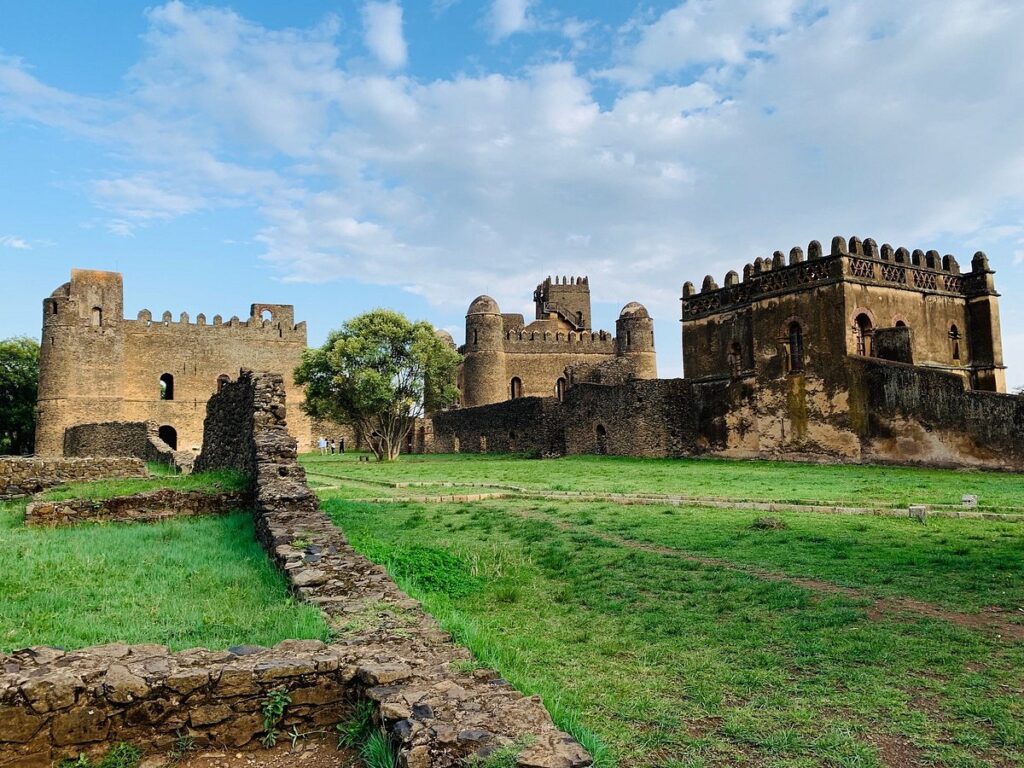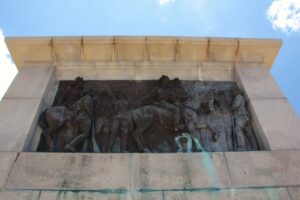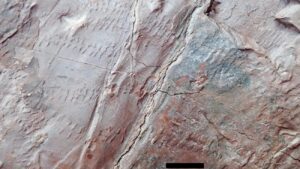Nestled in the heart of Ethiopia, Gondar is a city that whispers tales of ancient royalty and architectural grandeur. At the center of this historical narrative stands the Fasiledes Palace, a testament to the rich cultural heritage and architectural prowess of the Ethiopian Empire. This majestic palace, part of the larger Fasil Ghebbi complex, offers visitors a glimpse into the opulent lifestyle of Ethiopian emperors and the unique architectural style that flourished in the 17th century.
What to See
Fasiledes Palace is the crown jewel of the Fasil Ghebbi complex, a UNESCO World Heritage site. As you approach the palace, you’ll be greeted by its imposing stone walls and towering turrets, reminiscent of a medieval European castle. The architecture is a fascinating blend of Ethiopian, Portuguese, and Indian influences, characterized by its massive stone structures and intricate carvings.
Inside the palace, explore the grand halls and chambers that once hosted royal ceremonies and gatherings. The highlight is the throne room, where the emperors held court. The palace grounds are equally captivating, with lush gardens and a series of interconnected buildings, including churches and baths. Don’t miss the Fasilides Bath, a large sunken pool surrounded by stone walls and trees, which is still used for the annual Timkat festival.
A Bit of History
Gondar served as the capital of Ethiopia from the 17th to the 19th century, and Fasiledes Palace was built by Emperor Fasilides in the early 1600s. The city was a hub of culture, politics, and religion, attracting scholars, artists, and traders from across the region. The construction of the palace marked a new era in Ethiopian architecture, blending local traditions with foreign influences brought by Portuguese missionaries and Indian artisans.
The palace complex was expanded by Fasilides’ successors, each adding their own structures and embellishments. Despite the passage of time and the ravages of war, the palace remains remarkably well-preserved, offering a window into the past and the grandeur of the Ethiopian Empire.
Interesting Facts and Visitor Tips
- Fasiledes Palace is part of the Fasil Ghebbi complex, which includes several other palaces, churches, and monasteries. Take your time to explore the entire site for a comprehensive experience.
- The annual Timkat festival, celebrating the Epiphany, is a vibrant event held in January. The Fasilides Bath is filled with water, and locals reenact the baptism of Jesus, making it a unique time to visit.
- The architecture of the palace is often compared to European castles, but it also features distinct Ethiopian elements, such as the use of local stone and traditional building techniques.
- Guided tours are available and highly recommended, as they provide valuable insights into the history and significance of the site.
- Wear comfortable shoes, as you’ll be doing a lot of walking on uneven surfaces.
How to Get There
Gondar is accessible by air and road. The city has a small airport, Gondar Airport (GDQ), with regular flights from Addis Ababa, the capital of Ethiopia. The flight takes about an hour and offers stunning views of the Ethiopian highlands. Alternatively, you can take a bus or hire a private car for a scenic drive from Addis Ababa, which takes approximately 10-12 hours.
Once in Gondar, the Fasiledes Palace is located in the city center and is easily reachable by taxi or on foot from most hotels. The entrance fee is reasonable, and the site is open daily, with the best time to visit being in the morning or late afternoon to avoid the midday heat.
For first-time visitors, it’s advisable to hire a local guide who can provide context and stories that bring the palace to life. English-speaking guides are available, and they can enhance your understanding of the site’s historical and cultural significance.








